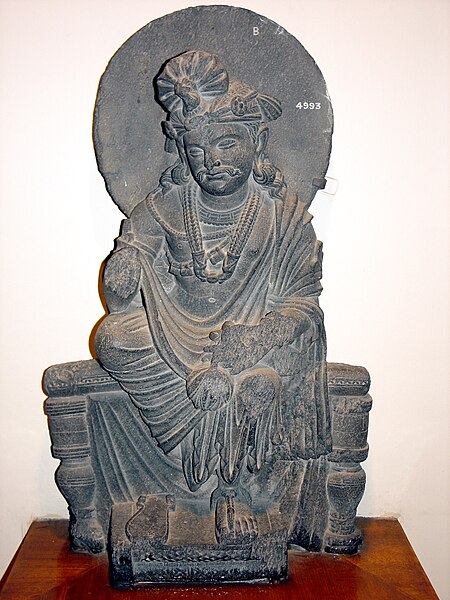Prajñāpāramitā means "the Perfection of Wisdom" or "Transcendental Knowledge" in Mahāyāna. Prajñāpāramitā refers to a perfected way of seeing the nature of reality, as well as to a particular body of Mahāyāna scriptures (sūtras) which discusses this wisdom.
A Tibetan painting with a Prajñāpāramitā sūtra at the center of the mandala
Prajñāpāramitā Devi, a personification of Transcendent Wisdom, Folio from a Tibetan 100,000 line Prajñāpāramitā manuscript
Tibetan Painting of Mañjuśrī bodhisattva with the sword of wisdom and a sūtra manuscript, which are common symbols of Prajñāpāramitā in Buddhist art
Prajñāpāramitā illustrated manuscript cover, circa 15th century
Mahāyāna is a term for a broad group of Buddhist traditions, texts, philosophies, and practices developed in ancient India. It is considered one of the three main existing branches of Buddhism, the others being Theravāda and Vajrayāna. Mahāyāna accepts the main scriptures and teachings of early Buddhism but also recognizes various doctrines and texts that are not accepted by Theravada Buddhism as original. These include the Mahāyāna sūtras and their emphasis on the bodhisattva path and Prajñāpāramitā. Vajrayāna or Mantra traditions are a subset of Mahāyāna which makes use of numerous tantric methods Vajrayānists consider to help achieve Buddhahood.
An illustration in a manuscript of the Aṣṭasāhasrikā Prajñāpāramitā Sūtra from Nalanda, depicting the bodhisattva Maitreya, an important figure in Mahāyāna
The Five Tathāgatas in Shishoin Temple (Tokyo). A unique feature of Mahāyāna is the belief that there are multiple Buddhas which are currently teaching the Dharma
Mahāyāna Buddhist triad, including Bodhisattva Maitreya, the Buddha, and Bodhisattva Avalokiteśvara. 2nd–3rd century CE, Gandhāra
Seated Avalokiteshvara bodhisattva. Gandharan, from Loriyan Tangai. Kushan period, 1st – 3rd century CE. Indian Museum, Calcutta








